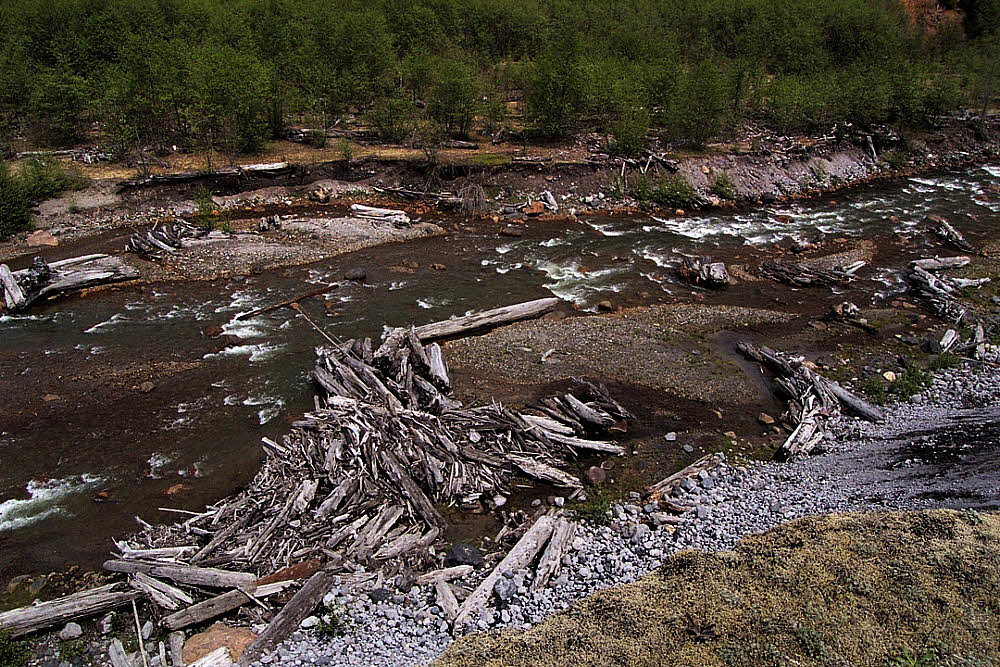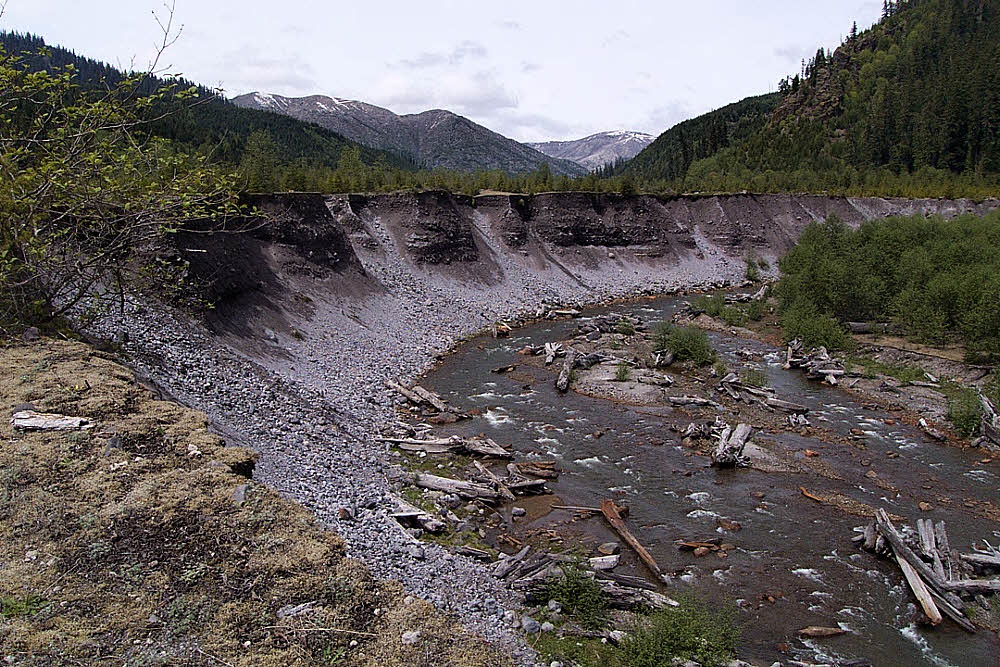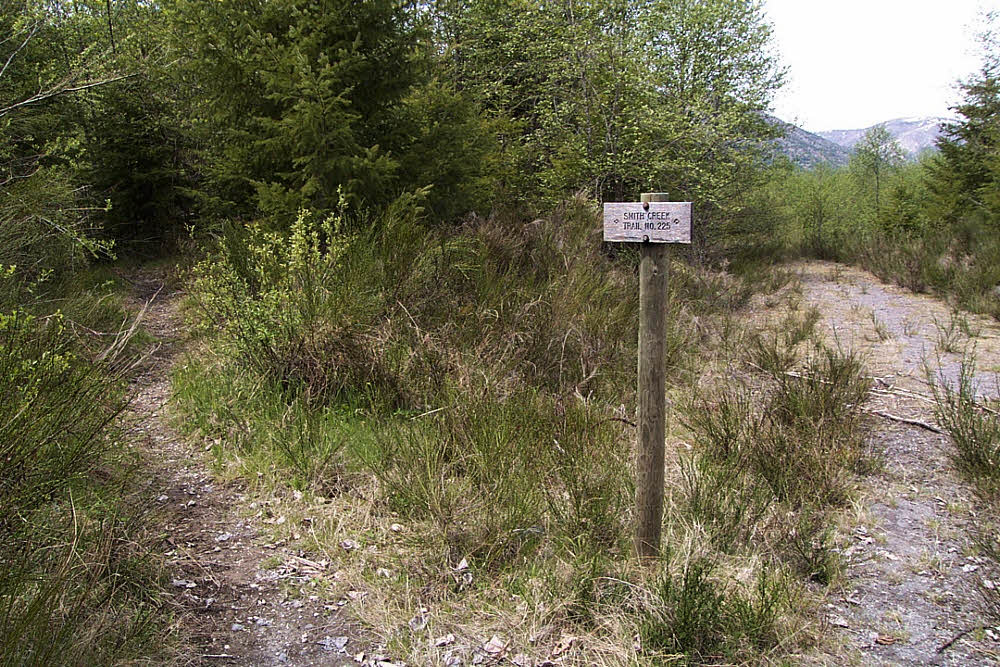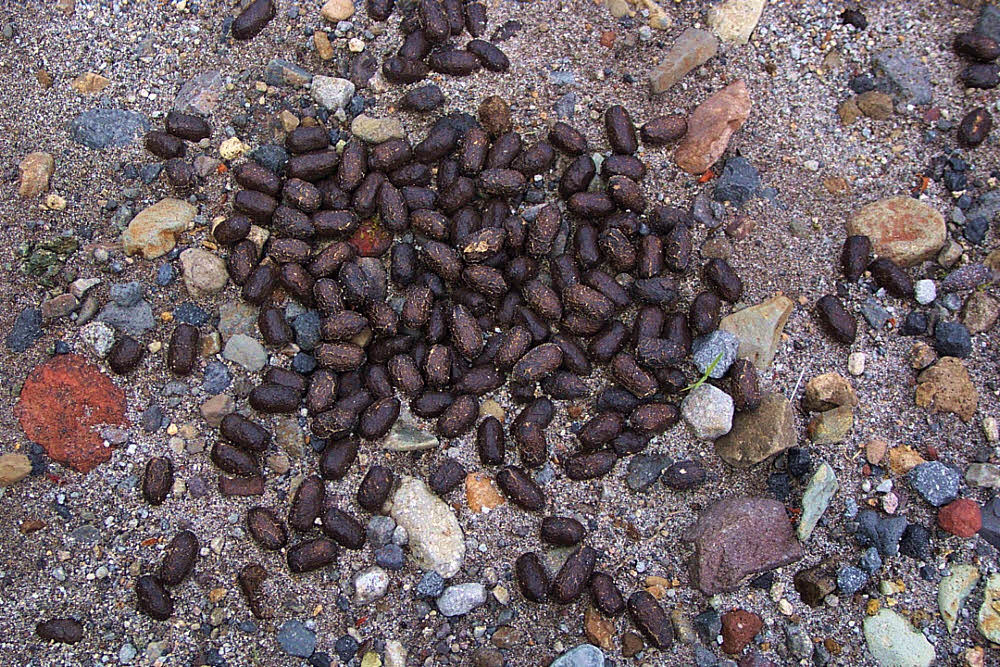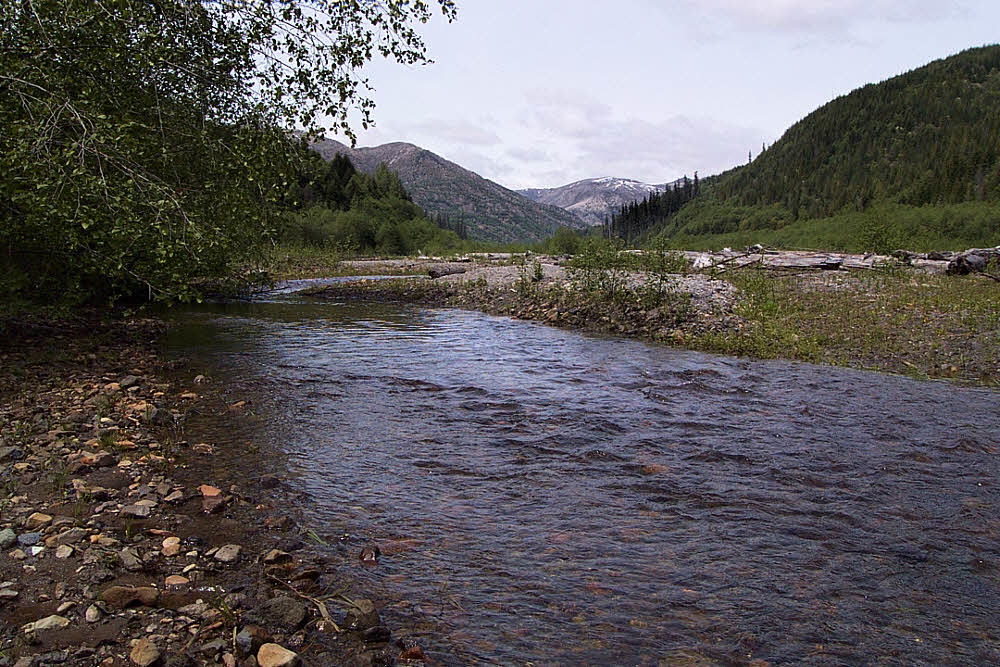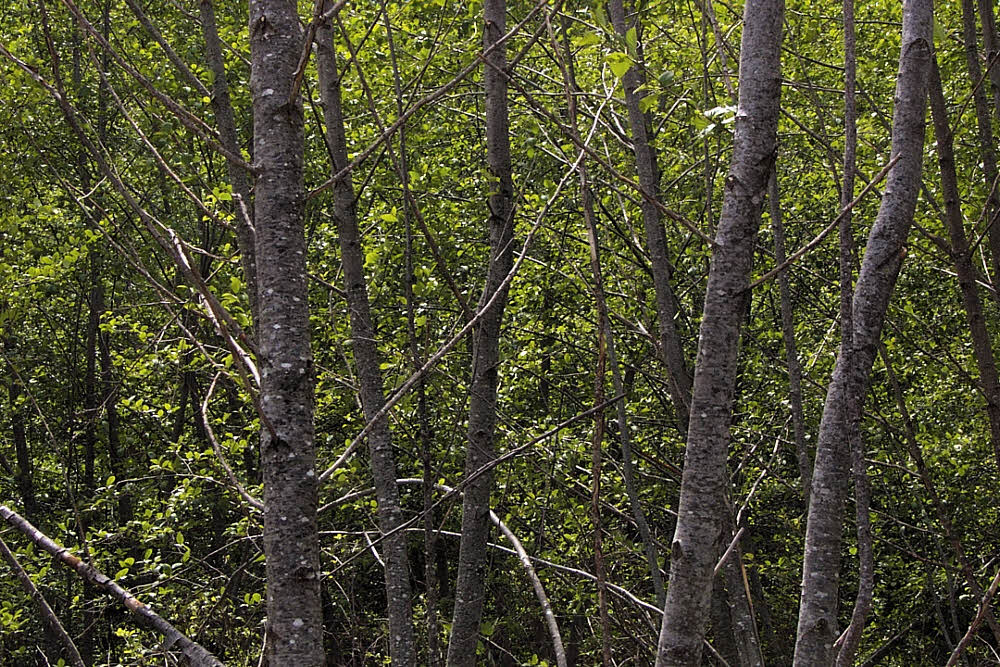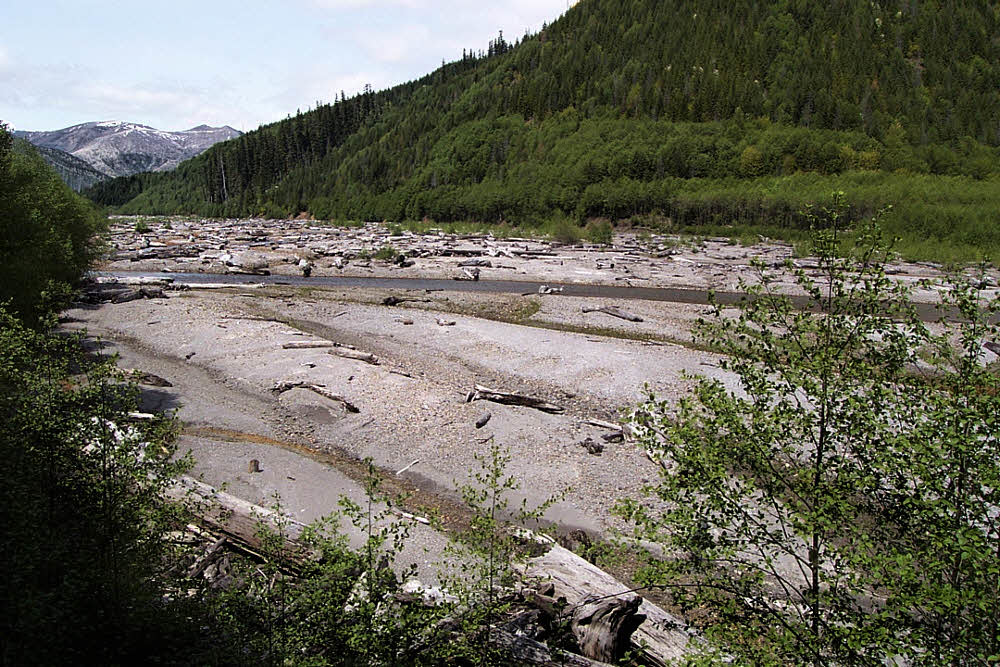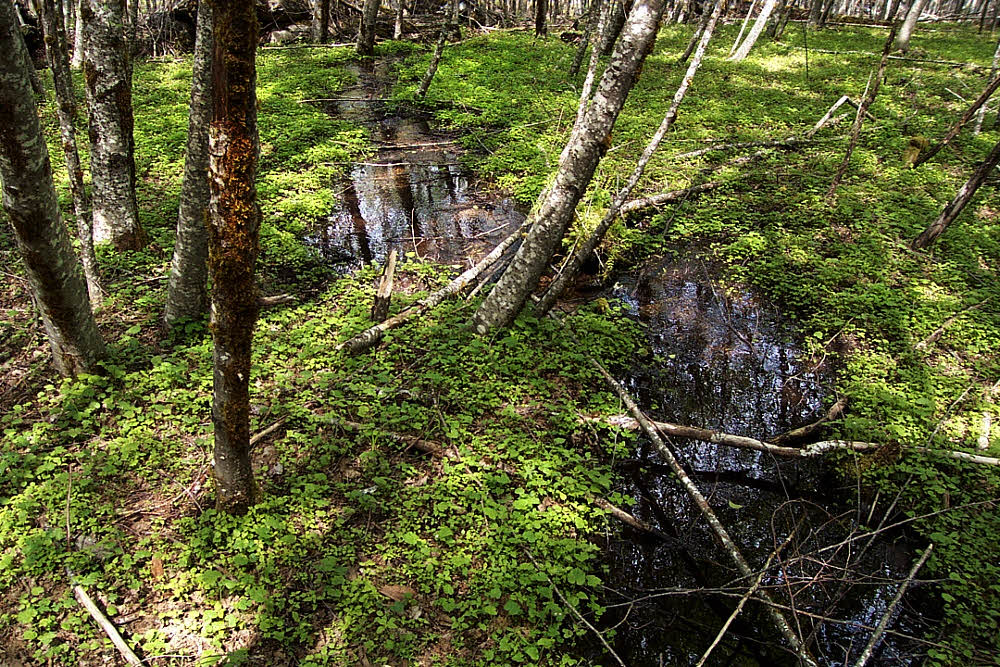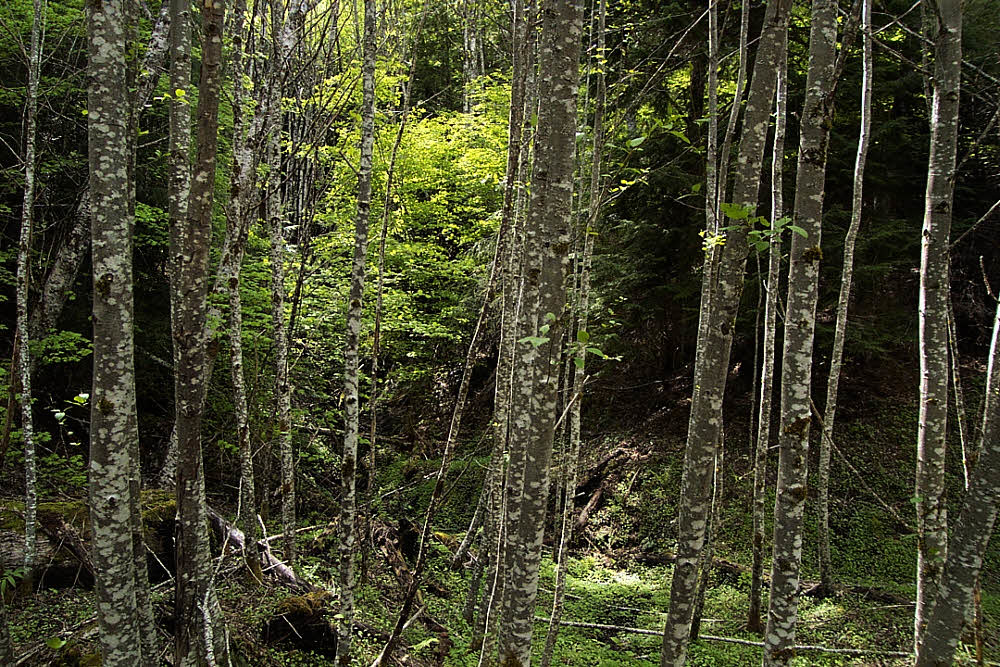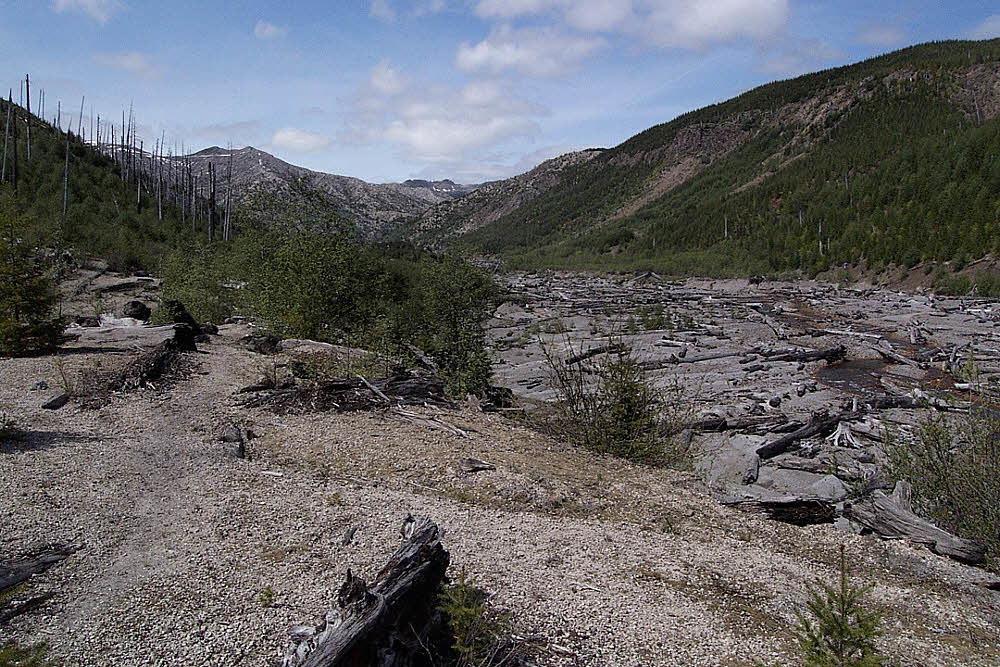Second installment in a short series.
Twenty-one years after Mt St Helens blew, the area from the northwest side of the mountain way around to the east was still covered with debris. A lot of this eventually migrated to streams and collected there.
And, as time passed, winter storms generated floods, which ripped at the landscape. Smith Creek was not immune.
When I first began investigating the area in 1997, the bottomlands along Smith Creek were largely intact. There were the remains of a logging road running roughly east to west, which made a great hiking trail.
But as the years rolled on, bridges were washed away, trails obliterated, trees toppled, banks undercut, and more parts of the old road went missing each year. New alder trees, however, simply replaced those that were lost.
And elk and deer fertilized them.
But it was not all ripping and tearing — in summer, on the right day, Smith Creek was a very mellow, calm, placid location.
New growth was everywhere, especially with fast-growing species like alder, the shrubs, and grasses.
After the first fifteen years, the ecosystem had rebounded enough that it began reclaiming areas that had been scoured clean in 1980. Once that process began, it kept picking up speed, moving faster each year.
And, for anyone who could negotiate the tangle of scattered logs in the stream bet itself, the walking was good. It was an area open to the sun and sky.
And full of little surprises, like small trees springing up anywhere they could get a start.
In the stream bed, or along it. Anywhere.
But taking a longer view, it was easy to see that this was not an ordinary stream. It was obvious that there had been great damage here, and that the recovery was far from over.
Though back along the south bank, on the old road, things were shady, private, even welcoming.
Every now and then a small stream slipped away from the steep slopes to the south, immediately adjacent to the trail, flowed across it, and slid through a grove or two of alders before finding a way to join the much larger Smith Creek and go for a ride.
I always liked these recurring shady spots. They were calm and green, especially on one of those furiously hot days in August.
Like here. This is a view back toward the east, descending along the old road inside its long green tunnel.
As the years slid by, more and more of the old road slid into the stream bed and was swept downstream. Things varied a lot from one year to the next, and each season it got harder and harder to hike along Smith Creek.
But it was always pretty.
Though sometimes bleak. Farther west, closer to St Helens itself, the landscape opened up more and more, and became increasingly desert-like.
More to come in a bit.
Images from my first digital camera, a 3 mega-pixel job, long obsolete and discarded.
